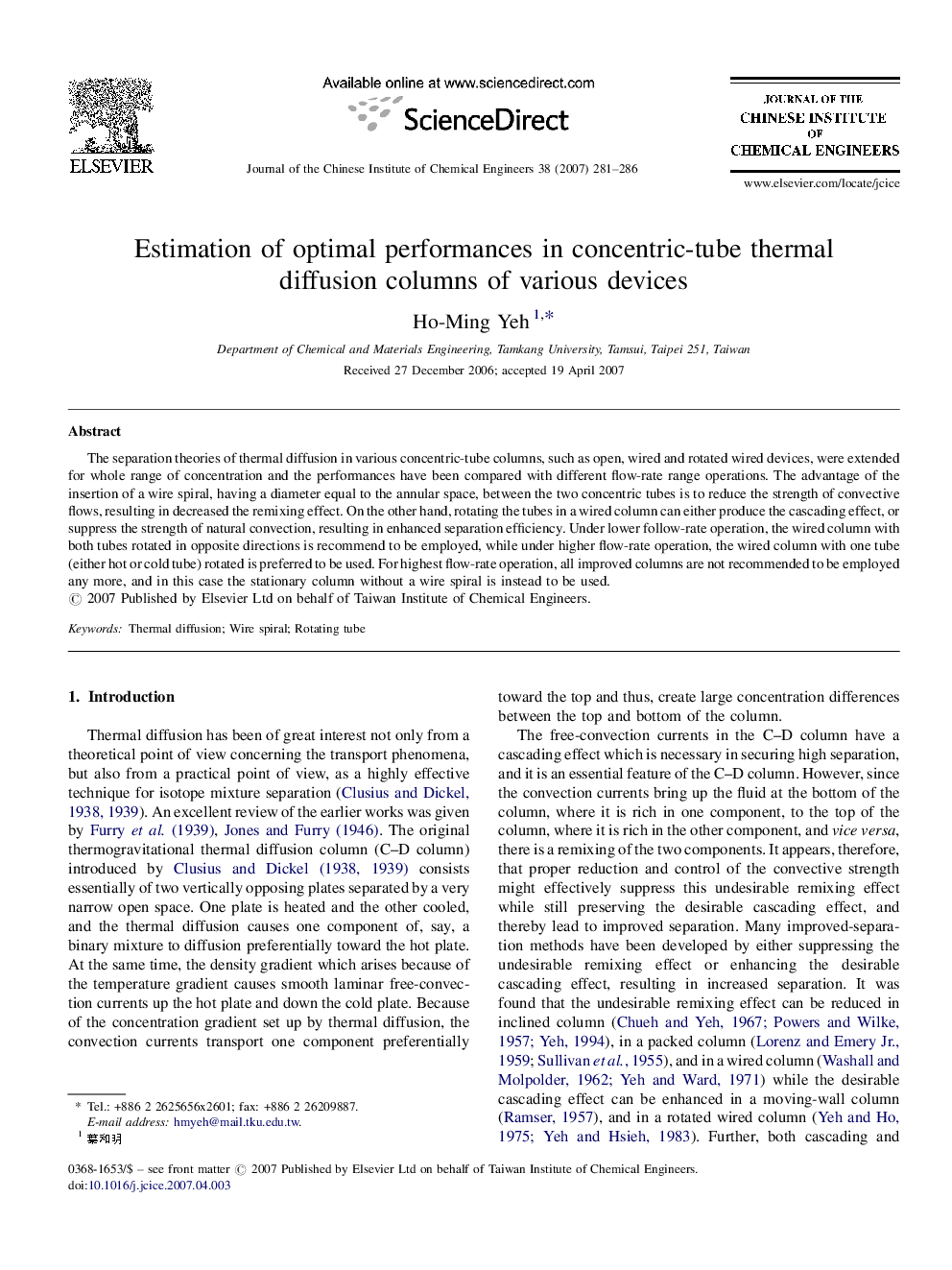| Article ID | Journal | Published Year | Pages | File Type |
|---|---|---|---|---|
| 217711 | Journal of the Chinese Institute of Chemical Engineers | 2007 | 6 Pages |
The separation theories of thermal diffusion in various concentric-tube columns, such as open, wired and rotated wired devices, were extended for whole range of concentration and the performances have been compared with different flow-rate range operations. The advantage of the insertion of a wire spiral, having a diameter equal to the annular space, between the two concentric tubes is to reduce the strength of convective flows, resulting in decreased the remixing effect. On the other hand, rotating the tubes in a wired column can either produce the cascading effect, or suppress the strength of natural convection, resulting in enhanced separation efficiency. Under lower follow-rate operation, the wired column with both tubes rotated in opposite directions is recommend to be employed, while under higher flow-rate operation, the wired column with one tube (either hot or cold tube) rotated is preferred to be used. For highest flow-rate operation, all improved columns are not recommended to be employed any more, and in this case the stationary column without a wire spiral is instead to be used.
